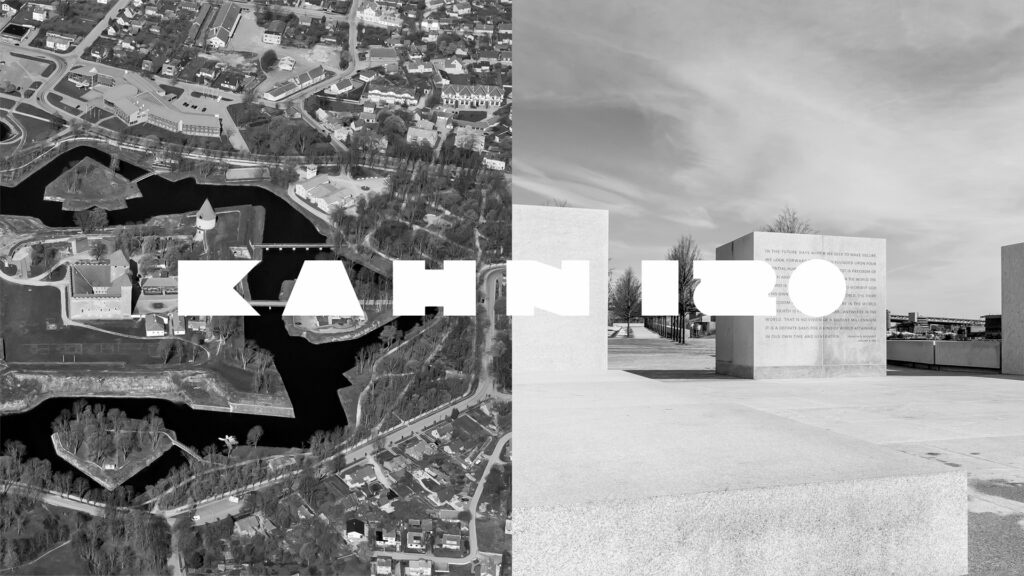In connection with the celebration of the Estonian-born architect Louis Kahn’s 120th anniversary in 2021, Estonian World paid a visit to the Louis Kahn Estonia Foundation, discussing the foundation’s work and numerous events dedicated to Kahn in the Estonian island of Saaremaa and in New York City.
The meeting place with the foundation’s members at the Tallinn Creative Hub has a symbolic meaning. Namely, the entrance to “Zone” in Andrei Tarkovsky’s film, “Stalker”, was located here – a place where the laws of physics do not apply and there is a room where all dreams can come true. The place is perfect for a discussion about the mythical and mystical Louis Kahn.
October is the month of celebrating several round anniversaries related to Kahn. The year of “Kahn 120” will be concluded in Kuressaare – a town in the Estonian island of Saaremaa where Kahn was born – as well as in New York City. The month also marks 15 years of the Kahn Days celebrations in Kuressaare. Ingrid Mald and Toivo Tammik, the two of you reestablished Louis Kahn’s name and legacy in his native country back in 2006. What has changed since?
Ingrid: The aim of the foundation has become more extensive, compared with its initial objectives in 2006. The main goal in 2006 was to introduce Kahn as a personality in Estonia. The local audience didn’t even know this genius came from here.
The foundation was initially created with the purpose to bring the marine vessel Point Counterpoint II (a stainless-steel barge that Kahn designed to host orchestral concerts – editor) to Estonia – that here, as in his native land, would be at least one of Kahn-designed objects.
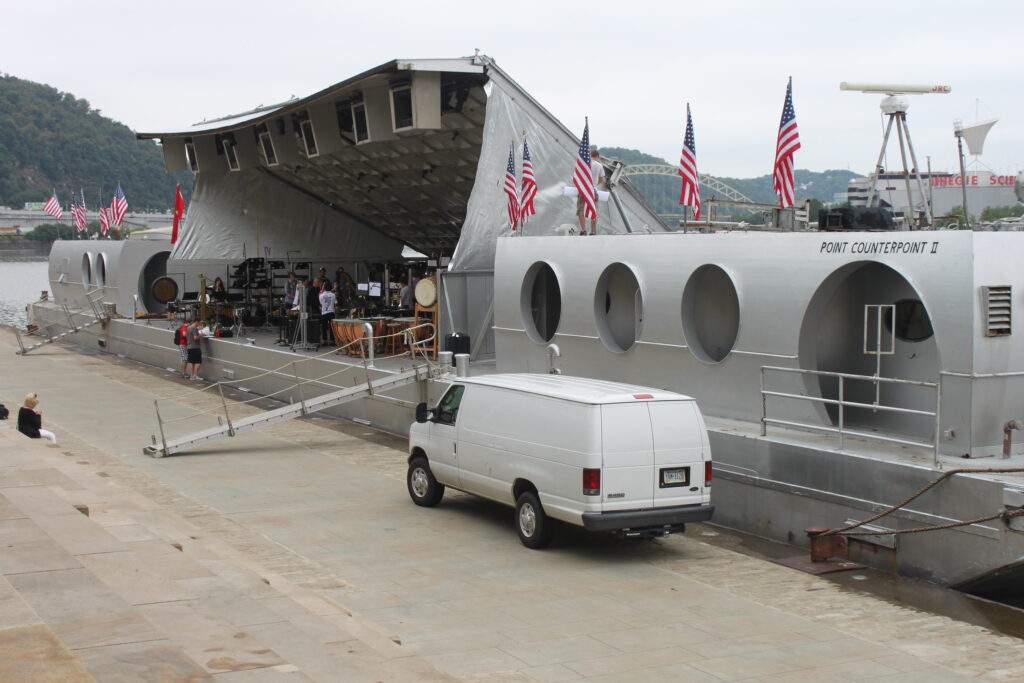
Already then, our thoughts were focused on combining music and architecture: the ship would have become literally the flagship of Estonian music. When our original plan did not materialise, the primary idea remained to commemorate Kahn’s legacy in his native land. The most important output to reach this goal is to find the idea and possibility for commemorating Kahn in Saaremaa, whether with a marker plate or even more ambitiously – in the form of the Kahn Centre.
There is much more going on. All activities aimed at the US, the music album project (Maria Faust “MO(NU)MENT”), three autumn concerts (two of them in cooperation with Saaremaa’s Läänesaarte Chamber Orchestra and one with Maria Faust and Four Freedoms Park in New York City) and the photo exhibition (Vainküla + Maasik) – it all essentially carries a much broader plan than just a series of commemorations.
All of us in the council dare to think bigger than it is currently written in the foundation’s objectives. Rather, we have begun to preserve and transmit Kahn’s spirit in a common, boundless cultural space.
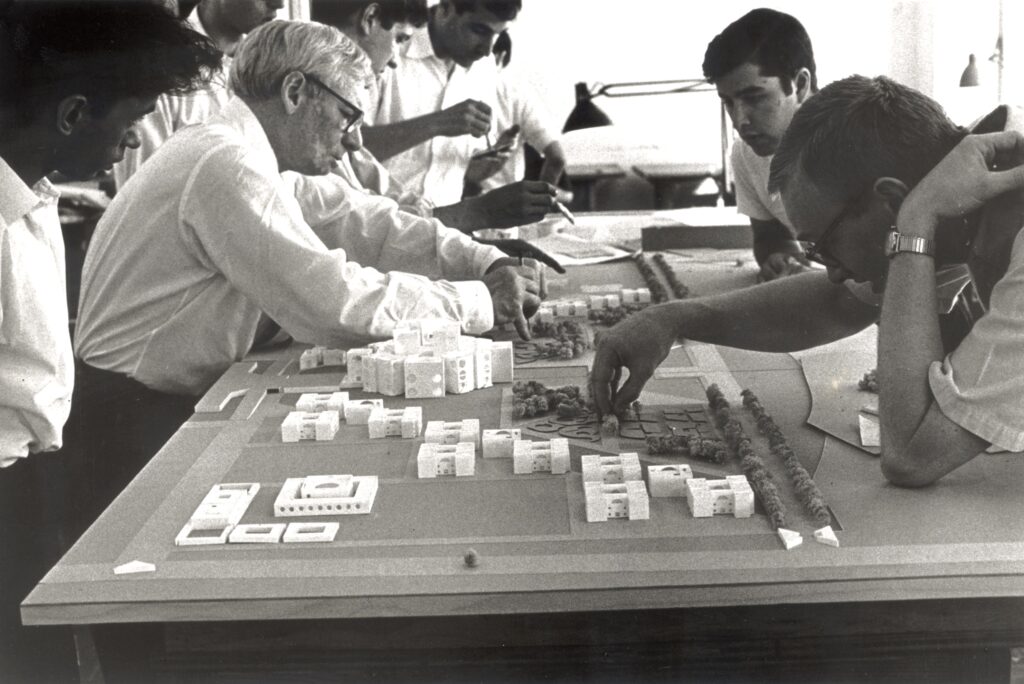
Toivo: I would start by saying that the meeting of two Estonian men – Lou Kahn and August Komendant – in the US in the 1950s was one of the most important architectural events in the world in the 20th century. We observed and emphasised this cooperation already during the first “Kahn Days” in 2006. We kept the press informed, published numerous articles and paved the way for later researchers.
We went to the US, both as members of the organising committee and privately, to trace the work of Lou and August. I remember a presentation night at the New York Estonian House, after which a nice local family, the Tsirgu family, drove me through the big city to see August Komendant’s former home in Upper Montclair, NJ. From the windows of this house, you could enjoy a magnificent view of the New York skyline.
I recently – in May this year – discussed the subject of Komendant and Kahn in a lecture at Sapienza University. In parallel with the Kahn Center in Kuressaare, I am still working on a small Komendant Center in Paide (an Estonian town – editor), under the aegis of the Wittenstein Time Center. This way, so many important stories would come full circle.
And, of course, there was another round anniversary in March this year – the Louis Kahn Estonia Foundation turned 10.
What does the Louis Kahn Estonia Foundation do today and who belong to the foundation?
Toivo: The foundation consists of an eight-member council. The three honorary members are Kahn’s children: Sue Ann Kahn, Alexandra Tyng and Nathaniel Kahn; the rest of five members unite different Kahn-related areas. Above all, Kahn was an architect, but he was also an outstanding artist, musician, visionary and teacher. Urmo Raus is a painter living in the Hague, recognised in monumental art and stained glass; Kristjan Järvi is a nomad of the music world and he feels at home in all Kahn’s elements; Ilja Sundelevitch teaches us wisdom from Talmudic dialectic to gematria; Ingrid Mald and myself are involved with architecture on a daily basis. Ott Rätsep coordinates the work.
The roots of such a great man are very important – his Saaremaa-beginning is both undisputable and romantic. Kahn designed works of architecture everywhere in the world – unfortunately not in Estonia that was then behind the Iron Curtain. Yet Kahn’s first years of life and the beginning of all beginnings were in Estonia. It is interesting for the world and for us.
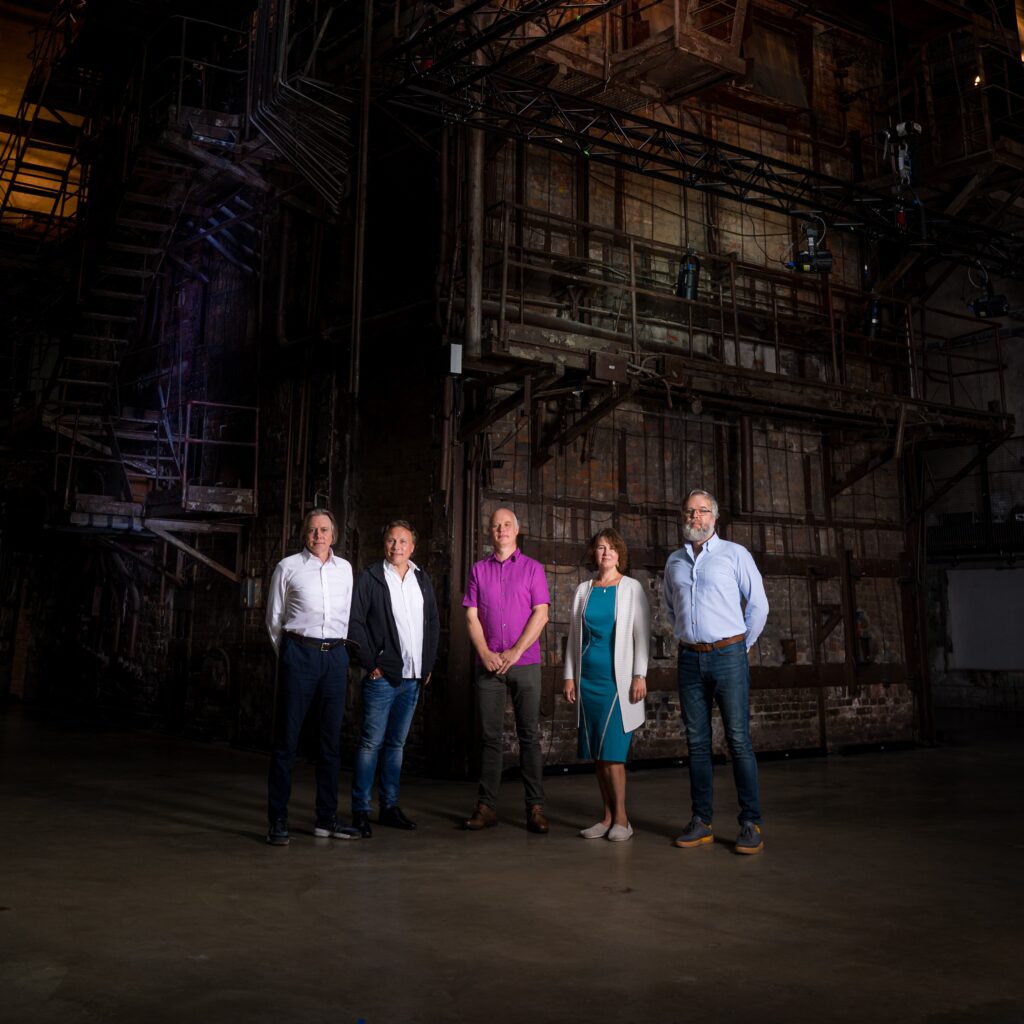
Ingrid: The foundation cooperates with various Kahn researchers and projects in Estonia and abroad. There are several extensive articles that have been published on this subject in Estonian as well as in English in “KAHN. The Islander” (2016).
There have been expeditions to India, Bangladesh and the US. Recent years have been characterised by active exhibition activities. Arne Maasik and Martin Pedanik (Estonian architects – editor) were present during the annual Kahn Award events in Kahn’s hometown, at the Philadelphia Center for Architecture and Design in 2019. Heie Treier (an Estonian art historian – editor) lectured both there and at Stanford University.
In October, we will be at the New York Architecture Festival, Archtober. Our cooperation with the Kahn Award committee also continues. This year, we are implementing Louis Kahn’s 120th birthday programme in several countries.
Ott Rätsep: After studying at Aalto University for some winters, I inevitably began to think about the impressive culture tandems, whose creative power has made these small countries bigger and who have been inspired by two universal languages – music and architecture: Aalto and Sibelius; Asplund and Alfvén; Korsmo and Grieg; Jacobsen and Nielsen. Figuratively speaking, Estonia is swinging on an unbalanced seesaw.
Indeed, we have Pärt in music, but what about architecture? When I met the Norwegian ambassador to Estonia, Else Berit Eikeland, to discuss the “Kahn 120” programme in Kuressaare, she couldn’t hide her surprise. “I’m a regular visitor to Saaremaa but only now do I hear that Kahn is from Kuressaare! What a great opportunity for Estonia,” she said. I am glad that thanks to the cooperation between Norway and Estonia we managed to invite Per Olaf Fjeld, a Norwegian architect and a former student of Louis Kahn, to speak in Kuressaare, where he makes a presentation on 15 October.
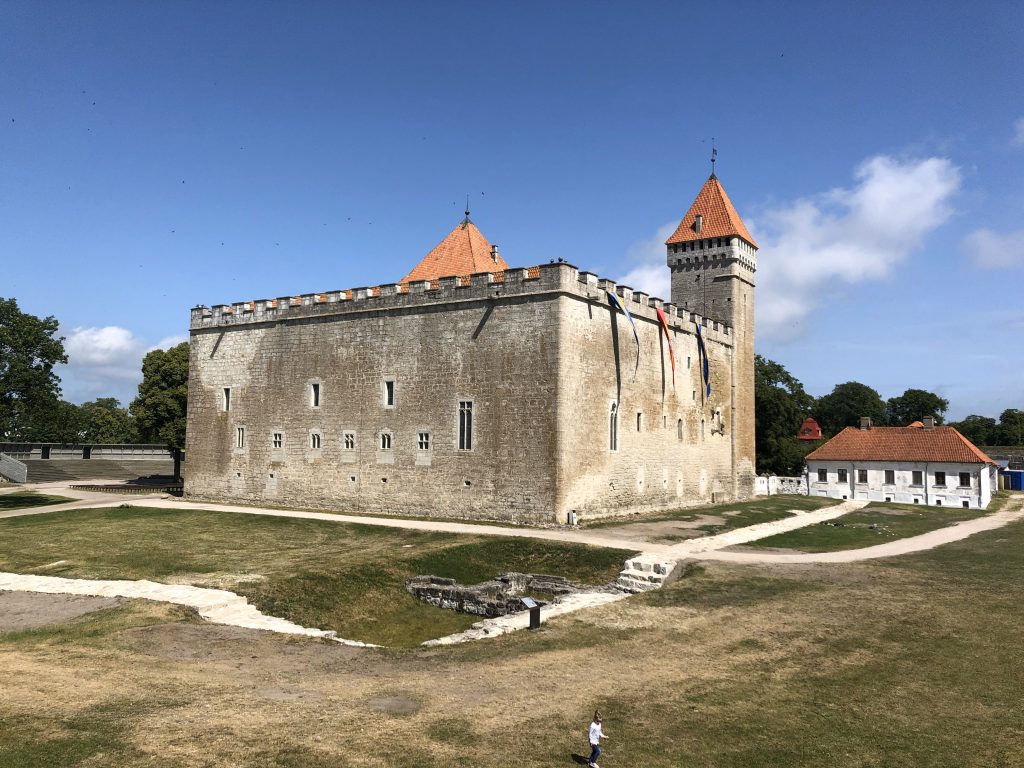
Urmo Raus: Kahn gave a 45-minute lecture entitled “Light and Silence” in Zurich 50 years ago. To mark the 50th anniversary of this lecture, a conference and exhibition was organised in Zurich in 2019, where I had the great honour to participate. In discussions with Kahn’s former students and colleagues, I was repeatedly asked what was going on in Kahn’s native land and how was his legacy commemorated. There was a perceptible expectation to create the European Kahn Centre in Saaremaa.
Kristjan Järvi: The Kahn Centre should become a transmitter of thought beyond architecture and music, as befits to Kahn. As Kahn himself has aptly said: “Man is always greater than his works.”
It would be perfect if the centre could give the keys to the “pilgrims” to enter Kahn’s world. The island, surrounded by the waterfront and the sky, opens the same boundless space as at the Salk Institute in La Jolla, California. “A façade to the sky”, as Luis Barragán, the late Mexican architect, said when he visited Salk. The same façade or canvas – or according to an Estonian architect, Vilen Künnapu, “the veil”, hides the endless opportunities to interpret and understand Kahn. To open it, bold and visionary action is needed.
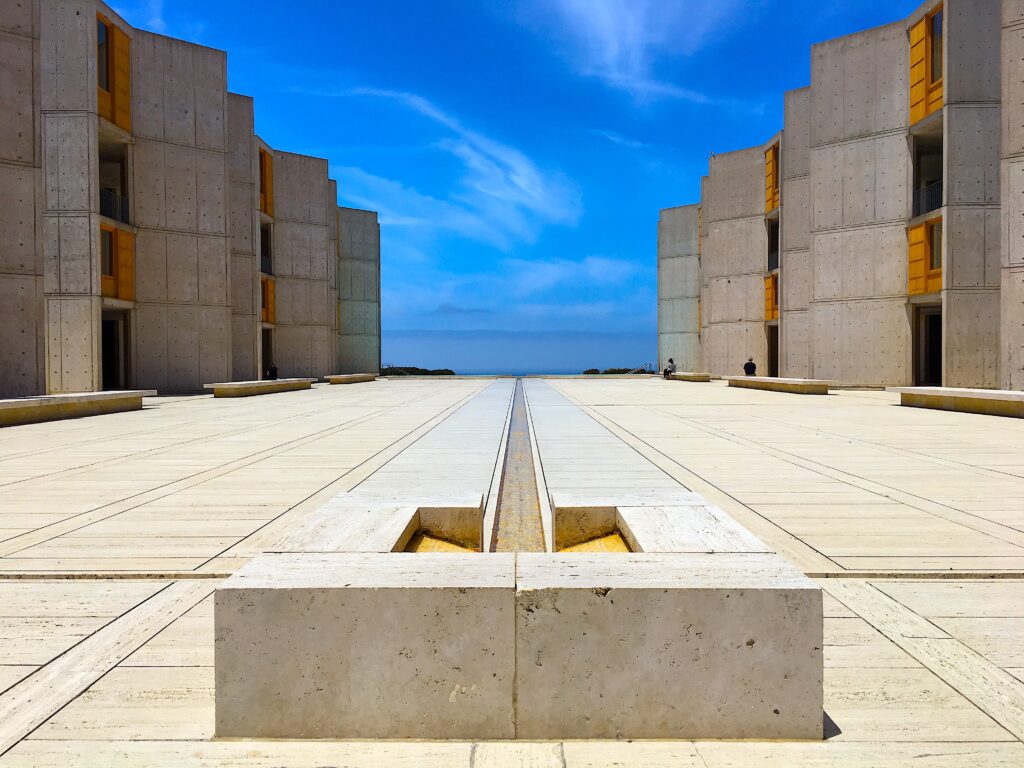
Will the Kahn Centre be established in Estonia?
Toivo: It is mainly up to the people of Saaremaa to decide, but nevertheless, we are working on it. I am pleased with the architecture workshops which were set up by Saaremaa Parish, Tallinn University of Technology and the Kahn Foundation, with the possibility to play through the scenario of the Kahn Centre.
After that, we are going to think about the following steps, including the international architecture competition. Like Kristjan Järvi said, there was no point in building just another concert hall. Kahn was fascinated by the buildings that shaped the beginning of the ideas. We are going to build something that is not yet built. The Kahn Centre sets a demanding and responsible task, which after a successful complementation could bring something like Mies’ pavilion in Spain or Trapholt in Denmark or Rothko Centre in Latvia – or even something greater – to Saaremaa.
Ott: It seems to me that we shouldn’t look for Kahn on the island, but the island within Kahn. An island, especially Saaremaa, has a specific energy and the same mystical factor lies in Kahn’s works. Kahn used to say about himself: “I was born on an island with a castle on it.” This is a short but meaningful sentence. The filmmaker and a member of our foundation, Nathaniel Kahn, has intertwined it sensitively into his film “My Architect”. Therefore, the growing interest towards Kahn is completely natural. We can feel it directly in our foundation, based both on the feedback from “Kahn 120” programme partners, from Italy to the US, as well as our personal contacts.
Urmo: The above-mentioned is confirmed by Abelardo Morell’s (a photographer, who named Louis Kahn as one of his favourite architects – editor) positive and quick reply to the foundation’s request to bring some of his best photos to Kuressaare. Kahn is the magic word that helps materialise one of the most valuable art exhibitions in Saaremaa through time. Morell and Kahn work with the same elements but with different tools. Morell’s exhibition will be opened in Kuressaare Town Hall Gallery on 15 October.

Why are the works of Per Olaf Fjeld and Abelardo Morell important when learning about Kahn?
Ott: Per Olaf Fjeld and his wife Emily Randall Fjeld published a monograph, “Louis I. Kahn – The Nordic Latitudes”, in 2019, and surprisingly there are certain similarities with Vilen Künnapu’s, Toivo Tammik’s and Heie Marie Treier’s concepts of Kahn.
For example, Kahn’s European tour in 1928, which is the central line of action in the book, begins in Saaremaa. Fjeld’s great value lies in his direct contacts with Kahn – unlike us, who unfortunately must rely on indirect and mediated knowledge. It is very important to bring the knowledge to Estonia.
Urmo: Fjeld’s approach also clearly highlights Kahn’s poetry of material – the sensitive use of material in the aesthetics of large-scale architectural forms, and the relationship of buildings to the surrounding environment, which has a clear Nordic influence.
As for Morell’s photo series “Camera Obscura”, we could somehow visit the same time and place as Kahn on his European tour in 1928. When speaking about Kahn, we have to discuss one of his architectural phenomena, ie how the light “appears” into the room. The light does not just come in through the window – it appears. “The light that appears” is also featured in the Morell’s “Camera Obscura” series of photos, which will be exhibited in Kuressaare.
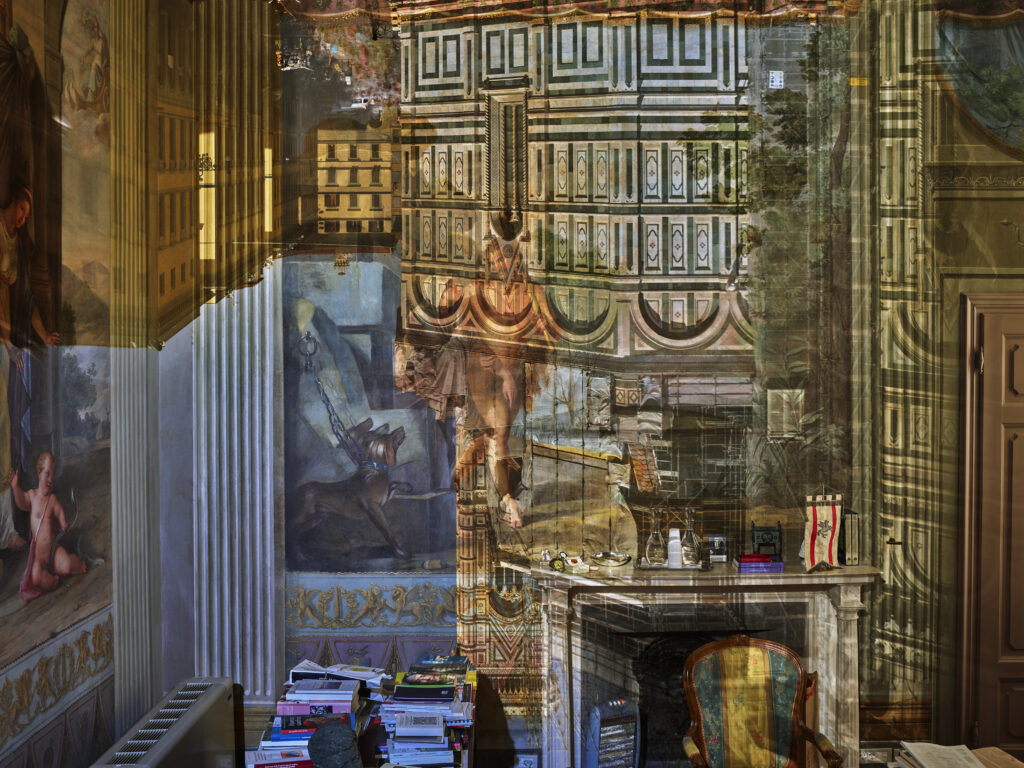
Many of the photos from Morell’s “Camera Obscura” Europe tour overlap with Kahn’s Europe tour in 1928 and these views of historical buildings, seen from the hotel window, haven’t changed. It is a sensuous experience, and it is the way also Kahn experienced architecture.
Morell’s second series of photographs, reminiscent of Kahn’s characteristic material poetry, is entitled “Constructions”.
The foundation is also a programme partner to Archtober, New York City’s festival of architecture and design. What’s going on there?
Kristjan Järvi: NYC is my city. I grew up there and it has affected me a lot. It is kind of strange to think that these two islands, very important to me – Saaremaa and Manhattan – make up the two ends of Kahn’s earthly journey.
The cultural bridge that comes to life between these two places on 16 October, is an uplifting homage to Kahn. The world premiere of the new piece, “MO(NU)MENT”, dedicated to Kahn by a fantastic Saaremaa-born composer and saxophone player, Maria Faust, at Four Freedoms Park on Roosevelt Island; additionally, Aarne Maasik’s and Rein Vainküla’s photo-programmes, followed by a short documentary, “A Walk on Louis Kahn’s Native Island” at the New York Estonian House – these events also mark the beginning of new activities for our foundation. Kahn used to emphasise the importance of beginnings in a creative process: in the beginning lies the spirituality and ingenuity of all human activity.
Ingrid: Scandinavia House in New York will host a conversation between Neeme Raud (an Estonian journalist – editor) and Charles E. Dagit Jr. (an American architect and author – editor).
C. Dagit’s commemorative book, “Louis I. Kahn―Architect: Remembering the Man and Those Who Surrounded Him”, will be published also in Estonian. We are pleased that the author is visiting New York City, where he can meet both local and Estonian audiences at the same time – as the conversation can be watched live.
Dagit was a student of Kahn’s at the University of Pennsylvania and in his book, he shows his teacher as a captivating and inspiring personality and brings to the reader the learning environment of that time, which required the student to be able to think on the same level as those great minds. Quite a challenge!
For the full programme and timings, please see the Louis Kahn Estonia Foundation’s webpage.

